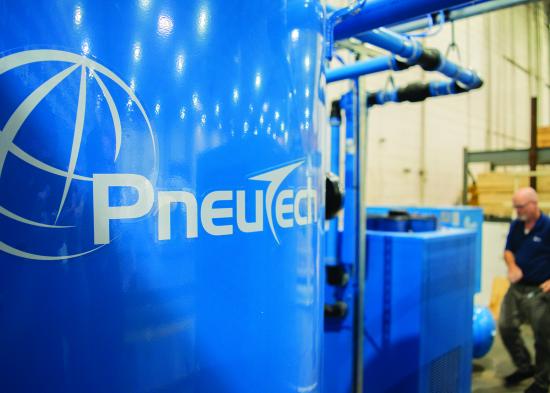The Transformation of the Banking Sector
The global banking sector is undergoing a radical transformation, driven by technological innovation, changing consumer habits, and evolving regulatory frameworks. While traditional institutions like Banca Mediolanum have long been pillars of financial stability, the rise of digital banking is reshaping the competitive landscape.
Over the past decade, digital banking has evolved from a niche service to a dominant force in the financial industry. Consumers are increasingly favoring online and mobile banking solutions over physical branches, drawn by the promise of convenience, lower costs, and innovative financial products. However, this transformation also brings significant challenges, including cybersecurity risks, regulatory hurdles, and the need for continuous technological adaptation.
The Rise of Fintech and Neobanks
A Disruptive Force in Finance
Fintech companies and neobanks have emerged as major disruptors in the financial sector. Unlike traditional banks, these digital-first institutions operate without physical branches, leveraging cutting-edge technology to offer seamless banking experiences. Their appeal lies in their ability to provide faster transactions, personalized financial advice, and lower fees.
Neobanks, in particular, have capitalized on the inefficiencies of traditional banking. By eliminating legacy systems and automating processes, they can offer high-interest savings accounts, instant loans, and real-time analytics tailored to individual users. These features have resonated strongly with younger generations, who demand digital-first solutions in all aspects of their financial lives.
Challenges for Fintech Players
Despite their rapid growth, fintech companies face significant challenges. One of the biggest hurdles is regulatory compliance. Unlike established banks, fintech firms often operate in a regulatory gray area, forcing them to navigate complex financial laws that vary by jurisdiction. Additionally, the lack of a physical presence can make it difficult to establish trust with customers, especially when it comes to high-value financial transactions.
Cybersecurity is another pressing issue. With an increasing number of cyberattacks targeting financial institutions, fintech firms must invest heavily in security measures to protect customer data. Any breach could severely damage their reputation and lead to regulatory scrutiny, undermining consumer confidence.

The Role of Artificial Intelligence in Banking
Enhancing Customer Experience
Artificial intelligence (AI) is revolutionizing the way banks interact with customers. From chatbots handling customer inquiries to AI-driven financial planning tools, the technology is streamlining banking services and improving user experiences. AI can analyze vast amounts of customer data to provide personalized recommendations, detect fraudulent activities, and optimize investment strategies.
One of the most promising applications of AI in banking is robo-advisory services. These digital advisors use machine learning algorithms to assess a client’s risk profile and suggest tailored investment strategies. By eliminating the need for human financial advisors, banks can reduce costs while making wealth management more accessible to a broader audience.
Risk Management and Fraud Prevention
AI is also playing a crucial role in risk management. Banks are deploying AI-driven systems to monitor transactions in real-time, identifying suspicious activities and preventing fraud before it occurs. Machine learning models can analyze patterns in financial data, flagging anomalies that might indicate money laundering or other illicit activities.
Moreover, AI is helping banks improve credit risk assessment. Traditional credit scoring methods often rely on outdated financial data, but AI-powered models can analyze a wider range of factors, including spending habits and social media activity, to provide a more accurate assessment of a borrower’s creditworthiness.
The Impact of Blockchain and Cryptocurrencies
Decentralized Finance and Its Implications
Blockchain technology is challenging the very foundation of traditional banking. Decentralized finance (DeFi) platforms, built on blockchain networks, allow users to access financial services such as lending, borrowing, and trading without intermediaries. This peer-to-peer model reduces costs and increases accessibility, particularly in regions with limited banking infrastructure.
While DeFi presents a new paradigm for financial services, it also introduces regulatory and security concerns. The lack of oversight makes DeFi platforms vulnerable to fraud and market manipulation. Additionally, the volatility of cryptocurrencies, which underpin many DeFi applications, raises questions about their long-term viability as a stable financial instrument.
The Response of Traditional Banks
In response to the growing popularity of blockchain-based finance, traditional banks are exploring ways to integrate digital assets into their offerings. Some institutions have started offering cryptocurrency custody services, while others are developing their own digital currencies to facilitate faster cross-border transactions.
Central Bank Digital Currencies (CBDCs) are another emerging trend. Governments and central banks worldwide are experimenting with digital versions of their national currencies to modernize payment systems and reduce dependence on physical cash. However, the widespread adoption of CBDCs could disrupt the role of commercial banks, forcing them to adapt to a new financial ecosystem.
The Evolution of Banking Regulation
Striking a Balance Between Innovation and Security
Regulatory bodies are facing a delicate challenge: fostering innovation in digital banking while ensuring financial stability and consumer protection. As new financial technologies emerge, governments must establish clear guidelines to prevent fraud, money laundering, and systemic risks.
Regulators are also working to address data privacy concerns. With banks collecting vast amounts of customer data, stringent measures are needed to protect sensitive information from breaches and misuse. The implementation of regulations like the European Union’s General Data Protection Regulation (GDPR) has set a precedent for stricter data governance policies in the financial sector.
The Role of Open Banking
Open banking regulations are reshaping the financial landscape by promoting competition and transparency. By requiring banks to share customer data with third-party providers (with user consent), open banking initiatives enable fintech firms to develop new financial services tailored to individual needs.
This shift is creating a more customer-centric banking environment, where users can access a wide range of financial products through a single platform. However, it also raises concerns about data security and consumer trust, as customers must be assured that their financial information is being handled responsibly.
The Future of Digital Banking
The Continued Decline of Physical Branches
The traditional bank branch model is becoming increasingly obsolete as digital banking gains traction. Many banks are closing physical locations in favor of online platforms, redirecting resources toward improving digital infrastructure. Mobile banking apps, AI-driven financial advisors, and biometric authentication are becoming the new standard for banking services.
However, this transition is not without challenges. Many customers, particularly older generations, still rely on in-person banking services. To address this, banks must strike a balance between digital innovation and maintaining essential physical services for those who need them.
The Next Wave of Financial Innovation
Looking ahead, digital banking will continue to evolve, driven by advancements in AI, blockchain, and financial automation. Hyper-personalized financial services, real-time transaction processing, and decentralized finance are likely to shape the future of the industry.
Banks that fail to embrace these changes risk falling behind in an increasingly competitive market. As fintech firms push the boundaries of innovation, traditional financial institutions must adapt or risk becoming obsolete in the digital age.
The financial landscape is entering a new era where technology and finance are deeply intertwined. The institutions that successfully navigate this transformation will be those that embrace innovation while maintaining trust and security in the digital banking experience.








